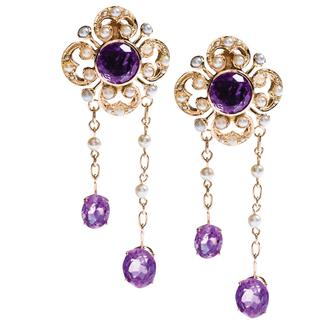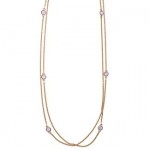After every wedding proposal comes the inevitable question, “When are you getting married?”
For most couples, choosing a date can be quite stressful. What colors do you want? Is a specific vendor available that day? Will it be an outdoor or indoor affair? All of these questions become an influencing factor to actually setting the date.
Though some brides choose a date that has a special meaning behind it, many brides base it off of more logistical reasons such as weather and travel arrangements, as well as vendor availability and financial reservations. Summer months, therefore, are usually favored for weddings with June being the most popular wedding month.
However, in the 18th and 19th century, Victorian brides chose their dates a bit differently. Weddings, and the marriage itself, were more of a social obligation for young Victorian women. Thus, the wedding date was often dictated by religious beliefs, superstitions and ancient traditions that were imbedded in Victorian society.For example, June prevailed as the most popular wedding month for Victorian brides, but due to very different reasons than modern couples. Dating back to ancient Roman devotion “Juno,” the goddess of marriage, it was believed that Juno would bring wealth, health and prosperity to those who married in the midst of her feast. Additionally, it was believed that a bride who married in June would ideally bear her first child the following spring, allotting enough time to fully recover before the next harvest would begin.
April, September, October, November and December were also popular wedding choices, as not to conflict with the bountiful harvest season as well as unsuitable weather constraints. May on the other hand, was frowned upon and considered unlucky, hence the ancient proverb, “Marry in May and rue the day, but marry in September’s shine, your living will be rich and fine.”
Along with choosing a month for a wedding, choosing a day of the week was an important concern to a Victorian couple. Though most modern weddings are held on the weekend, it was normal for a Victorian wedding to take place on a weekday. Since the Sabbath was considered unfeasible for a wedding, weekdays were encouraged and superstitions for hosting a weekend wedding began to arise. A popular Victorian rhyme included:
Marry on Monday for health,
Tuesday for wealth,
Wednesday the best day of all,
Thursday for crosses,
Friday for losses, and
Saturday for no luck at all.
At every Victorian wedding, much like today, both the bridal party and guests would display their most extravagant jewelry pieces during the special wedding events. Fortunately, many of these Victorian jewelry pieces were beloved and kept in excellent condition while being passed down from generation to generation before ending up in our San Diego showroom. From gemstone right hand rings to gorgeous colorful pendants, Leo Hamel Fine Jewelers has an ever-changing array of vintage jewelry, including antique Victorian pieces, to fall in love with!







